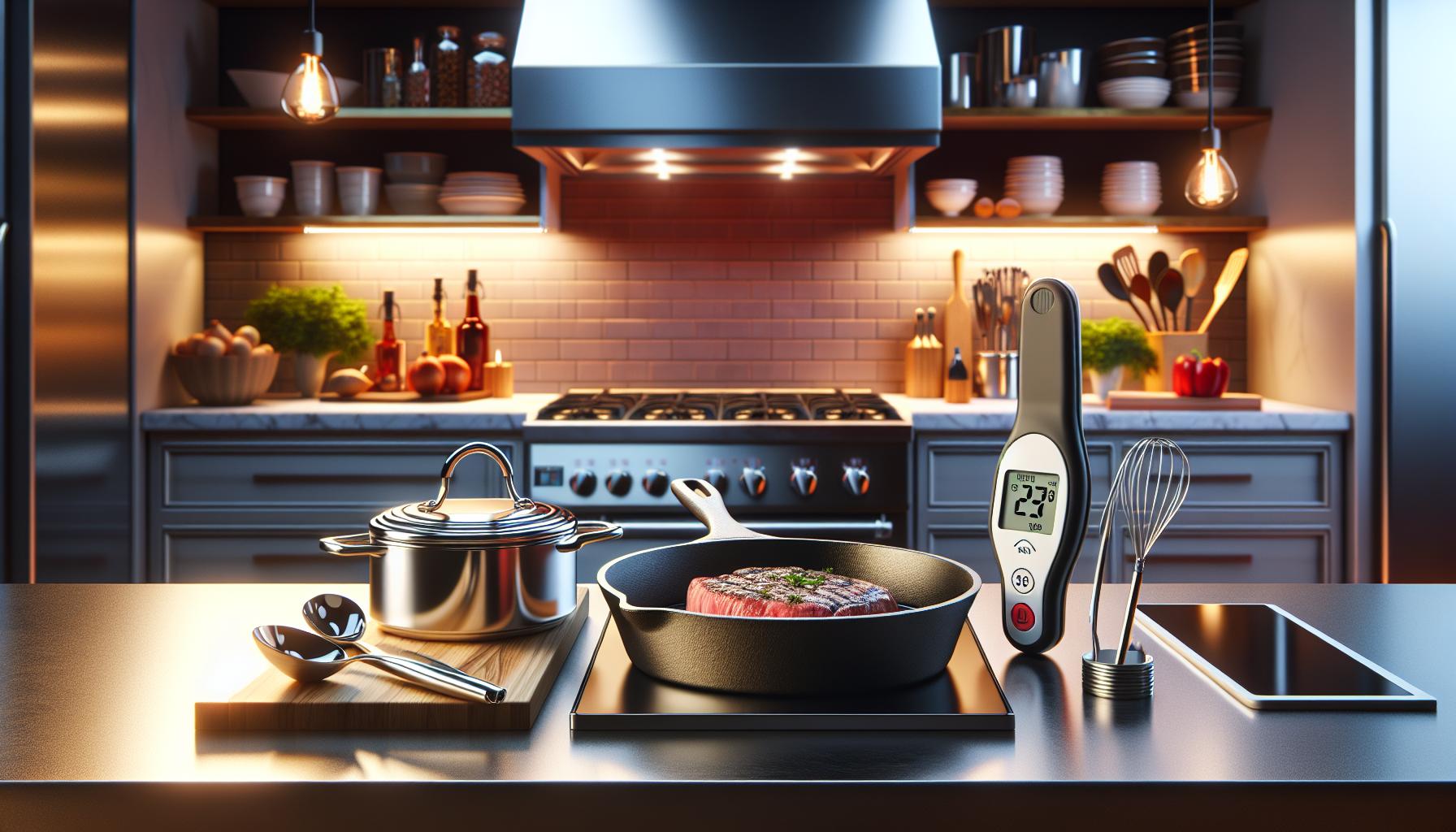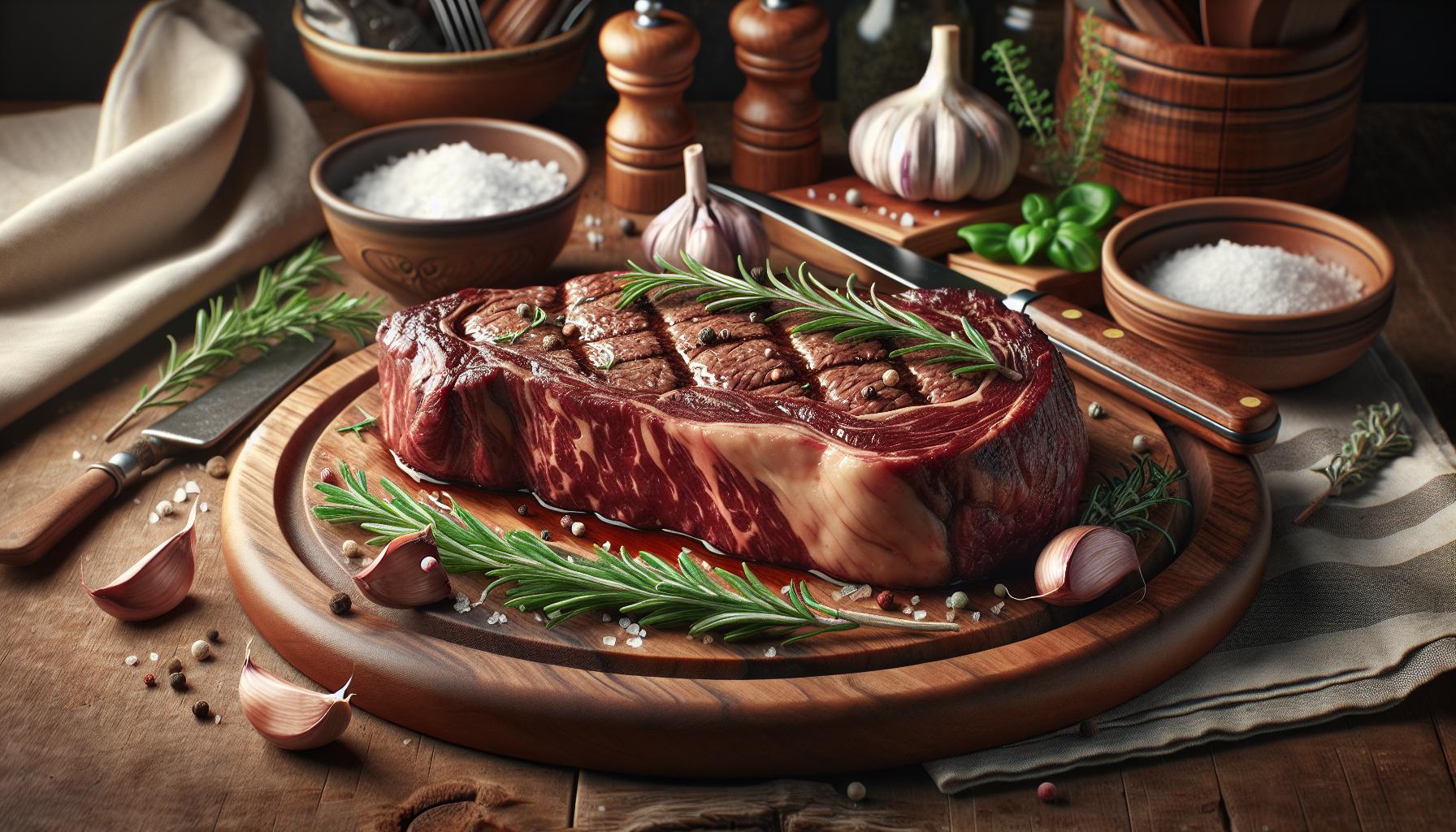Mastering the art of cooking the perfect Steak Cooking Techniques isn’t rocket science but it’s close enough to make even seasoned chefs break into a cold sweat. From the sizzling sound of meat hitting a hot pan to the mouthwatering aroma that fills the kitchen there’s something magical about transforming a raw cut into a masterpiece of culinary perfection.
Whether you’re a kitchen novice or a self-proclaimed grill master knowing the right techniques can mean the difference between serving a tender juicy steak and something that resembles a leather shoe. In this comprehensive guide we’ll explore proven methods that’ll help anyone cook restaurant-quality steaks right in their own kitchen. From selecting the perfect cut to achieving that coveted crust these techniques will revolutionize your steak game forever.
Steak Cooking Techniques
The quality grade and cut of steak significantly impact the cooking process and final taste. Different cuts offer varying levels of tenderness, marbling and flavor profiles.
Prime vs Choice vs Select Grades
Beef grades indicate the Steak Cooking Techniques quality based on marbling content and cattle maturity. Prime grade contains abundant marbling (8-13% fat content) creating tender juicy steaks ideal for dry-heat cooking. Choice grade features moderate marbling (4-7% fat) offering good flavor at a lower price point. Select grade has minimal marbling (2-3% fat) resulting in leaner less tender meat that benefits from marinades.
| Grade | Marbling % | Best Cooking Methods |
|---|---|---|
| Prime | 8-13% | Grilling, Broiling |
| Choice | 4-7% | Grilling, Pan-searing |
| Select | 2-3% | Marinating, Braising |
Most Popular Steak Cuts for Cooking
Premium Steak Cooking Techniques come from specific locations along the cow’s back. Ribeye offers rich marbling throughout with intense beefy flavor. Tenderloin (filet mignon) delivers supreme tenderness with mild taste. NY Strip provides balanced marbling with robust flavor. T-bone combines strip steak and tenderloin separated by a T-shaped bone. Sirloin offers lean meat with good flavor at a lower price point.
| Cut | Location | Characteristics |
|---|---|---|
| Ribeye | Upper rib cage | Rich marbling, full flavor |
| Tenderloin | Back portion | Most tender, mild taste |
| NY Strip | Short loin | Medium marbling, robust |
| T-bone | Short loin | Two-in-one cut, varied texture |
| Sirloin | Rear back | Lean, economical |
Essential Equipment and Tools

Achieving restaurant-quality steak requires precise tools that enhance control over temperature, timing, and technique. These essential items form the foundation for consistent results in steak preparation.
Temperature Control Essentials
An instant-read digital thermometer serves as the cornerstone of temperature monitoring, measuring internal meat temperatures with ±0.5°F accuracy. Leave-in probe thermometers connect to smartphone apps, providing real-time temperature tracking throughout the cooking process. Additional temperature tools include:
- Infrared surface thermometers for checking pan or grill heat
- Timer with multiple settings for precise cooking phases
- Temperature monitoring system with programmable alerts
- Calibration tools to maintain thermometer accuracy
Proper Cookware Selection
Cast iron skillets deliver superior heat retention with temperatures reaching 500°F for optimal searing. Heavy-gauge stainless steel pans featuring tri-ply construction distribute heat evenly across cooking surfaces. Essential cookware characteristics include:
- 10-12 inch diameter pans accommodating standard steak cuts
- Heat-resistant handles withstanding 450°F oven finishing
- Flat cooking surfaces ensuring complete steak contact
- 5-7 pounds weight for stable temperature maintenance
- Raised edges containing rendered fats during cooking
- Cast iron griddles for consistent heat distribution
- Carbon steel pans combining durability with responsiveness
- Enameled cast iron for acidic marinades
- Stainless steel grill pans creating characteristic marks
Preparation Methods Before Cooking

Proper Steak Cooking Techniques preparation establishes the foundation for exceptional flavor and texture. These techniques enhance the meat’s natural characteristics and create optimal conditions for cooking.
Dry Aging vs Wet Aging
Dry aging exposes beef to controlled temperature and humidity conditions for 14-28 days, creating concentrated flavors through moisture evaporation. This process breaks down muscle fibers and enzymes, resulting in tender meat with distinct nutty notes. Wet aging occurs when vacuum-sealed beef ages in its natural juices for 4-10 days, producing a milder flavor profile. While dry-aged steaks offer intense beef flavors and command premium prices, wet-aged steaks maintain consistent moisture levels and cost less. Professional kitchens use both methods:
- Dry aging requires temperatures of 34-38°F
- Humidity levels stay between 80-85%
- Wet aging maintains original weight
- Cost difference: 25-50% higher for dry-aged
Seasoning and Marinating Techniques
Salt penetrates meat fibers effectively when applied 40 minutes before cooking. Coarse kosher salt creates an optimal crust and enhances the beef’s natural flavors. Black pepper adds aromatics when pressed into the surface just before cooking. Effective marinades contain:
- Acid components (vinegar, citrus, wine)
- Oil bases (olive, vegetable, avocado)
- Aromatics (garlic, herbs, spices)
- Salt concentrations of 1-2% by weight
| Cut Thickness | Recommended Time |
|---|---|
| 1 inch | 2-4 hours |
| 1.5 inches | 4-6 hours |
| 2 inches | 6-8 hours |
Popular Cooking Methods

Professional chefs employ various techniques to achieve the perfect steak. Each method creates distinct flavor profiles temperature precision controls.
Pan-Searing Process
Pan-searing creates a flavorful crust through the Maillard reaction while maintaining a juicy interior. A cast-iron skillet heated to 450°F (232°C) provides optimal heat distribution for searing. Adding butter thyme rosemary to the pan enhances flavor through basting. The process takes 4-5 minutes per side for medium-rare on a 1-inch thick steak. Temperature monitoring ensures precise doneness:
- Rare: 125°F (52°C)
- Medium-rare: 135°F (57°C)
- Medium: 145°F (63°C)
Grilling Techniques
Grilling delivers smoky flavors through direct high heat contact. Setting up dual temperature zones enables both searing crusts developing internal temperatures. The hot zone maintains 450-500°F (232-260°C) for initial searing. Moving steaks to the cooler zone at 300-350°F (149-177°C) allows gradual cooking. A 1.5-inch thick steak requires:
- Searing: 2-3 minutes per side
- Indirect heat: 5-7 minutes
- Resting time: 5-10 minutes
Reverse Searing Method
Reverse searing combines low-temperature roasting with high-heat finishing. Placing steaks in a 250°F (121°C) oven brings them to desired internal temperature. The process takes 45-60 minutes for 2-inch thick cuts. Final searing in a 500°F (260°C) pan creates a caramelized crust. Benefits include:
- Even cooking throughout
- Better moisture retention
- Precise temperature control
- Minimal gray banding
Sous Vide Approach
Sous vide ensures precise temperature control through water bath cooking. Vacuum-sealed steaks cook at exact target temperatures:
- Rare: 120°F (49°C) for 1-2.5 hours
- Medium-rare: 130°F (54°C) for 1-4 hours
- Medium: 140°F (60°C) for 1-4 hours
A post-cook sear in a 500°F (260°C) pan develops surface browning. The method produces consistently perfect results edge to edge.
Achieving the Perfect Doneness
Achieving the ideal doneness level transforms a good steak into an exceptional dining experience. Temperature monitoring plays a crucial role in determining the final texture and juiciness of the meat.
Temperature Guidelines
Internal temperature readings indicate specific doneness levels for steaks:
| Doneness Level | Internal Temperature | Description |
|---|---|---|
| Rare | 125°F (52°C) | Bright red center |
| Medium Rare | 135°F (57°C) | Warm red center |
| Medium | 145°F (63°C) | Pink center |
| Medium Well | 150°F (66°C) | Slightly pink center |
| Well Done | 160°F (71°C) | No pink |
The target temperature sits 5°F below the final desired temperature due to carryover cooking. Removing steaks at this point ensures optimal results. Checking the temperature at the thickest part of the steak provides the most accurate reading.
Resting and Serving Tips
Resting Steak Cooking Techniques allows the internal juices to redistribute throughout the meat. A 5-minute rest for each inch of thickness creates the optimal serving condition. Tenting steaks loosely with aluminum foil maintains warmth without trapping steam that could soften the crust. Room temperature plates prevent premature cooling of the steak. Slicing against the grain breaks down muscle fibers, resulting in more tender bites. Strategic placement of compound butter or finishing salt enhances the final presentation.
Common Mistakes to Avoid
Steak cooking mistakes diminish the quality of even premium cuts. Overcrowding the cooking surface prevents proper heat distribution between steaks. Moving steaks too frequently disrupts the formation of a flavorful crust.
Temperature-related errors significantly impact steak quality:
- Cooking cold steak straight from the refrigerator creates uneven doneness
- Using insufficient heat fails to develop proper caramelization
- Relying on touch tests instead of thermometers leads to inconsistent results
Seasoning missteps alter the final flavor profile:
- Adding salt too early draws out moisture
- Applying wet marinades for extended periods breaks down meat fibers
- Using fine-ground pepper burns at high temperatures
Preparation and handling errors affect texture:
- Cutting into the steak immediately after cooking releases essential juices
- Pressing down on steaks forces out moisture
- Using dull knives tears meat fibers instead of cutting cleanly
Pan selection impacts heat control:
- Choosing non-stick pans prevents proper searing
- Using thin pans creates hot spots
- Selecting pans too small for the steak size causes steam buildup
Timing mistakes compromise doneness levels:
- Starting with an unheated cooking surface extends cooking time
- Skipping the resting period results in juice loss
- Cooking different thickness steaks simultaneously leads to uneven doneness
These errors transform prime cuts into subpar meals. Recognizing these common pitfalls enables cooks to maintain proper technique throughout the cooking process.
Mastering the art of cooking Steak Cooking Techniques requires attention to detail and practice. From selecting premium cuts to perfecting cooking techniques every step plays a crucial role in achieving steakhouse-quality results at home. Armed with the right tools proper preparation methods and an understanding of temperature control anyone can elevate their steak-cooking game.
The journey to cooking the perfect steak doesn’t end here. It’s about experimenting with different techniques learning from mistakes and finding what works best for individual preferences. Whether using a cast-iron skillet or trying the sous vide method success lies in respecting the fundamentals while being open to new approaches.



